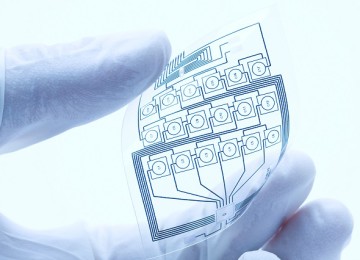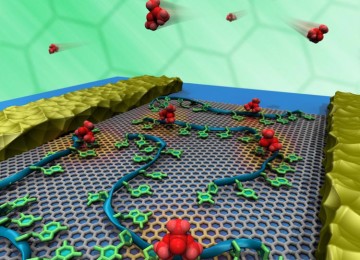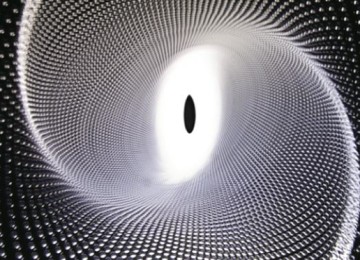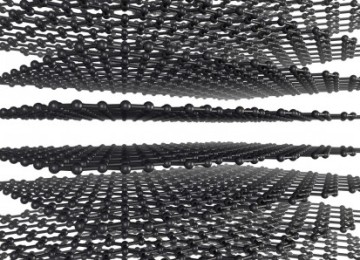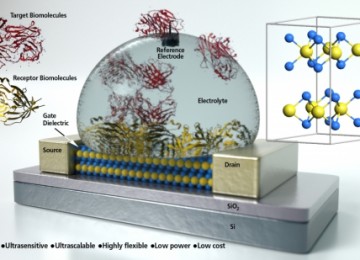Graphene faster communications by raises response of optical and photonic circuits

Graphene faster communications by raising response of optical and photonic circuits
Ultra-fast detection of light lies at the heart of optical communication systems nowadays and the most import thing in it raising response of optical and photonic circuits . next generation of the internet of things and 5G, data communication bandwidth is growing exponentially, thus requiring even faster optical detectors that can be integrated into photonic circuits , The research group led by Prof at ICFO Frank Koppens has shown that a two-dimensional crystal, combined with graphene, has the capability to detect optical pulses with a response faster than ten picoseconds, while maintaining a high efficiency. By using ultra-fast laser pulses, the researchers have shown a record-high photo-response speed for a heterostructure made of two-dimensional materials. These new materials are gaining more and more attention due to their amazing and rich variety of properties.
Before few years scientists at the University of California, Berkeley in National Science Foundation (NSF), have demonstrated a new technology for graphene that could break the current speed limits in digital communications , And researchers said: “ This is the world’s smallest optical modulator, and the modulator in data communications is the heart of speed control ” because graphene enables us to make modulators that are incredibly compact and that potentially perform at speeds up to ten times faster than current technology allows. This new technology will significantly enhance our capabilities in ultrafast optical communication and computing.
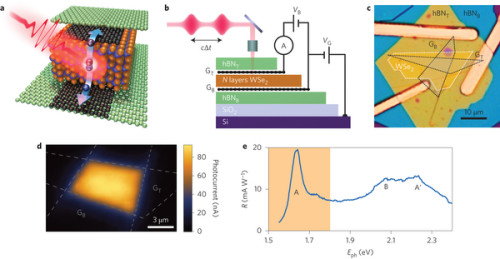
Graphene raising response of optical and photonic circuits Graphene/WSe2 (2-D material) graphene heterostructure
Ultra-fast detection of light lies at the heart of optical communication systems nowadays and the most import thing in it raising response of optical and photonic circuits . next generation of the internet of things and 5G, data communication bandwidth is growing exponentially, thus requiring even faster optical detectors that can be integrated into photonic circuits , The research group led by Prof at ICFO Frank Koppens has shown that a two-dimensional crystal, combined with graphene, has the capability to detect optical pulses with a response faster than ten picoseconds, while maintaining a high efficiency. By using ultra-fast laser pulses, the researchers have shown a record-high photo-response speed for a heterostructure made of two-dimensional materials. These new materials are gaining more and more attention due to their amazing and rich variety of properties.
Before few years scientists at the University of California, Berkeley in National Science Foundation (NSF), have demonstrated a new technology for graphene that could break the current speed limits in digital communications , And researchers said: “ This is the world’s smallest optical modulator, and the modulator in data communications is the heart of speed control ” because graphene enables us to make modulators that are incredibly compact and that potentially perform at speeds up to ten times faster than current technology allows. This new technology will significantly enhance our capabilities in ultrafast optical communication and computing.
Graphene is also transparent at certain positive voltages because, in that situation, the electrons become packed so tightly that they cannot absorb the photons.
The researchers found a sweet spot in the middle where there is just enough voltage applied so the electrons can prevent the photons from passing, effectively switching the light “off.”
“If graphene were a hallway, and electrons were people, you could say that, when the hall is empty, there’s no one around to stop the photons,” said Xiaobo Yin, co-lead author of the Nature paper and a research scientist in Zhang’s lab. “In the other extreme, when the hall is too crowded, people can’t move and are ineffective in blocking the photons. It’s in between these two scenarios that the electrons are allowed to interact with and absorb the photons, and the graphene becomes opaque.”
In their experiment, the researchers layered graphene on top of a silicon waveguide to fabricate optical modulators. The researchers were able to achieve a modulation speed of 1 gigahertz, but they noted that the speed could theoretically reach as high as 500 gigahertz for a single modulator.
While components based upon optics have many advantages over those that use electricity, including the ability to carry denser packets of data more quickly, attempts to create optical interconnects that fit neatly onto a computer chip have been hampered by the relatively large amount of space required in photonics.
Light waves are less agile in tight spaces than their electrical counterparts, the researchers noted, so photon-based applications have been primarily confined to large-scale devices, such as fiber optic lines.












